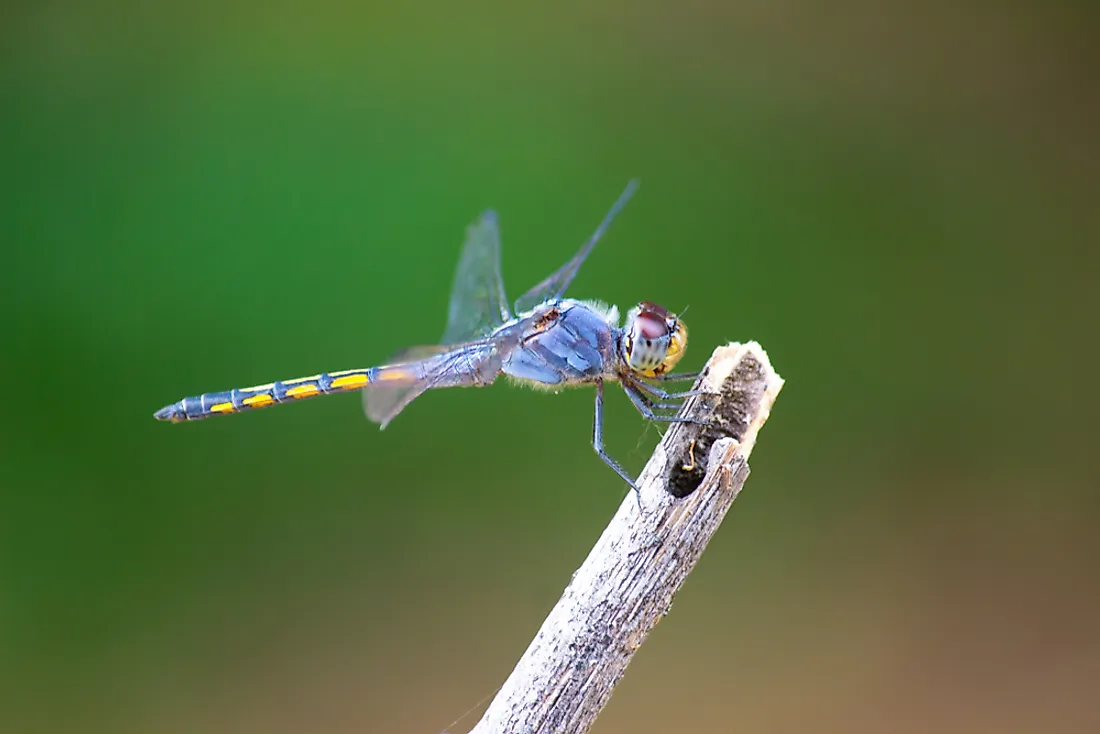What Is Odonata?

Odonata is an insect order comprising of the carnivorous insects such as dragonfly and damselfly. The term “Odonata” was coined by Fabricius from a Greek word “odontos” meaning tooth. He may have used the term to refer to the insects because their mandible posses teeth. Sometimes the word dragonfly is used to refer to all Odonata to avoid ambiguity. However, the correct English name for the whole group is Odonate. Odonates are among the insects that have secured themselves in folklore and art. For instance, dragonflies are held in high regard in Japan with a journal (Tombo) dedicated to reporting their biology since 1958. However, in Europe, the insects are considered threatening.
Basic Structure
The structure of an adult odonate reflects its ability to fly. It has two pairs of wings and long narrow abdomen divided into 10 segments. The head has conspicuous eyes and less prominent antennae. The thorax of the adult insect is tilted along the body’s axis with the thorax slightly sloping to accommodate the large wing muscles and set the legs forward. As a result, the odonates can easily perch on objects but are unable to walk on the flat surface. Equilibrium during flight is maintained by a delicate orientation organ located where the head joins the thorax. In dragonflies, the compound eyes converge at the top of the head and may consist up to 30,000 ommatidia. The large eyes enable them to have an almost 360-degree view. On the other hand, damselflies have well-separated eyes.
Lifecycle
Odonates’ eggs are laid in or near water bodies. The eggs develop through series of stages with molting taking place at the end of each stage. After hatching, a spider-like larva is released from the egg. The larva differs significantly from the adult fly. The wings are not developed at the larval stage and only appear halfway through the larval development. The wings develop rapidly as the larva molts. Larval development may take 3 weeks or more depending on the species and habitat.
Odonates do not go through the pupal stage. Instead, at the end of the larval stage, the larva will stop feeding, allowing its organs to transform into those of an adult. The larva will then molt in a process known as “emergence” to disclose the adult. The newly emerged odonate is often soft and reproductively immature. The adult insect can only fly once the wings straighten and the body hardens. The adult life is divided into maturation phase that lasts about 2 weeks and the reproductive phase.
Reproduction
The reproduction phase is characterized by the mature adult dragonfly flying to the waters where the eggs will be laid. The male insects assemble at the water bodies before the females to establish their territories. Courtship begins when the female enters the territory. The female may accept or reject the courtship display. Odonates have unique mating postures. The male grasps the head of the female with the tip of its abdomen, inducing her to direct her abdomen to the accessory sex organ located at the base of his abdomen. The sex position, often referred to as the “wheel position” enables the female to receive the sperms. The female will almost immediately lay eggs while the male keeps guard against any approaching male.











